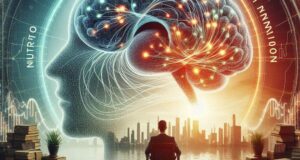Imagine a vast celestial map, where stars are not ruled by kings but guided by invisible laws of harmony. In this emerging universe, DecentraFunding and Flowonomy rise as twin constellations, illuminating a path toward a more intelligent and equitable market cosmos.

DecentraFunding represents the bold architecture of funding models rooted in DAO governance — decentralized autonomous organizations — where traders are no longer mere subjects of financial monarchs but citizens of Here, capital is allocated not through closed-door decrees but through transparent, programmable consensus, much like a river carving its path according to the lay of the land rather than the whim of a tyrant.
Flowonomy, its celestial sibling, is the meticulous study and optimization of order flow dynamics within AI-augmented markets. Where markets once moved like chaotic storms, Flowonomy engineers them into symphonies of precision, where orders glide and pivot like dancers in an endless ballet, orchestrated subtly by the invisible hands of machine intelligence.
Together, DecentraFunding and Flowonomy do not merely disrupt traditional finance — they reimagine it, setting fire to old thrones and planting gardens of new possibility.
Objections
Yet from the shadows, critics whisper their doubts:
Objection 1: “In DecentraFunding, can true governance be achieved, or will whales and hidden cabals subvert the will of the many, as they have always done?”
Objection 2: “By optimizing flows through AI, does Flowonomy risk sterilizing the spirit of free markets, turning vibrant jungles into cold, algorithmic deserts?”
Objection 3: “Is the dream of decentralization itself not a utopian illusion — where eventually power, like gravity, finds a way to concentrate once again?”
These concerns weigh heavily, like ancient chains echoing in the halls of every new revolution.
Answers
The champions of this new era respond with steel in their voices:
Response 1: DecentraFunding does not promise perfection; it promises transparency. When governance is visible on the blockchain, abuses cannot hide in darkness — accountability becomes as natural as breathing.
Response 2: Flowonomy seeks not to destroy market vitality, but to refine it.
Response 3: True decentralization requires eternal vigilance.
Benefits
The rewards of this brave new design are abundant:
Accessibility: In DecentraFunding, traders from any corner of the world can access capital pools, judged not by legacy connections, but by merit and reputation scored on-chain.
Efficiency: Flowonomy ensures that orders are matched with elegance and minimal friction, reducing costs and increasing liquidity — the very lifeblood of healthy markets.
Markets built on DAOs and AI-optimized flow are like forests diversified against disease, not plantations awaiting a single blight.
Innovation: Both models unleash creative energies. With capital distributed more fairly and markets operating more smoothly, traders and builders alike are free to innovate without the invisible hands of gatekeepers throttling their ambitions.
If old finance was a castle with high walls and narrow gates, DecentraFunding and Flowonomy together are a thriving bazaar beneath open skies, where every trader, every order, every voice has a place.
It is a resurrection of the Athenian dream — democracy not just of men, but of money itself. It is the breath of Da Vinci in the machine, the echo of Ibn Khaldun in algorithms, a testament that intelligence and integrity, when braided together, can chart stars unseen by old empires.

DecentraFunding and Flowonomy are not mere technologies; they are philosophies in motion.
They ask us to reimagine markets not as brutal arenas of domination, but as symphonic ecosystems of collective flourishing.
In the age when the machine becomes the scribe of commerce and the chain becomes the ledger of governance, it is our duty — and our destiny — to wield these tools with both courage and conscience.




